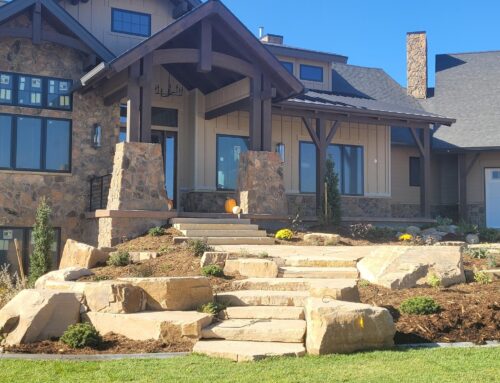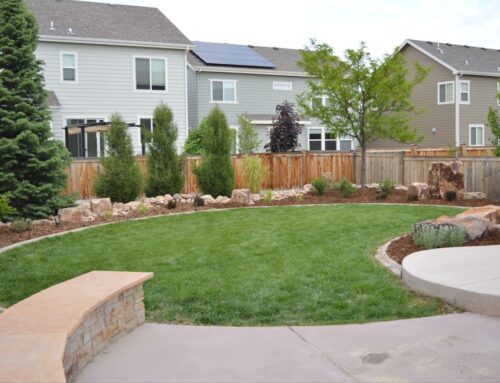Overview of Colorado’s Climate and Soils
Colorado’s diverse climate and soils provide a unique challenge for choosing the right plants for outdoor spaces. The state can be divided into three primary climate zones: the Eastern Plains, Foothills, and Mountains. Each zone has its own distinct characteristics that impact plant selection.
The Eastern Plains, characterized by hot summers and cold winters, are known for their prairies and plains of grass. The soil in this region can vary from sandy loam to heavy clay. The Foothills region experiences milder summers and colder winters. The soil in this zone is typically well-drained, making it suitable for a variety of plants. The Rocky Mountain region has high elevations, with cold winters and short growing seasons. The soil in this zone can range from sandy to rocky.
When choosing plants, it’s important to consider the five life zones in Colorado: Plains, Foothills, Upper Sonoran, Montane, and Alpine. Each life zone has its own unique combination of temperature, precipitation, and other factors that affect plant growth.
Understanding the climate zones and life zones of Colorado is essential for selecting plants that are well-suited to the specific conditions of each region. By considering factors such as soil conditions, water availability, and temperature variations, gardeners can choose plants that thrive in their particular area. Colorado State University and the Denver Botanic Gardens are excellent resources for information on native and drought-tolerant plants that are well-suited to the Colorado climate.
Popular Options for Colorado Homes and Gardens
When it comes to choosing plants for Colorado homes and gardens, there are several popular options that thrive in the unique climate and soil conditions of the state. However, it’s important to not only consider popular options but also look for native plants that are suitable for Colorado’s specific climate and soil conditions. Native plants have adapted to the local environment over time, making them more resilient and better equipped to thrive in the state’s diverse conditions.
One of the key benefits of choosing native plants is that they are well-suited to Colorado’s climate. They can handle the hot summers and cold winters that are characteristic of the state, requiring less maintenance and water. Native plants are also better suited to the specific soil conditions of different regions in Colorado, whether it’s the sandy loam of the Eastern Plains or the well-drained soil of the Foothills.
When selecting native plants, consider their preferred growing conditions, such as soil type, sun exposure, and precipitation levels. By choosing plants that are naturally adapted to Colorado’s conditions, you can create a thriving and sustainable garden that requires less water and maintenance.
When planning your Colorado home and garden, consider popular options like currants, sumacs, hydrangeas, grama grass, rabbitbrush, and snowberry. However, prioritize native plants that are well-adapted to Colorado’s climate and soil conditions. By doing so, you can create a beautiful and sustainable outdoor space that thrives in Colorado’s unique environment.
Native Plants
When it comes to gardening in Colorado, native plants are a fantastic choice. Not only do they add beauty and color to outdoor spaces, but they also play a crucial role in supporting the local ecosystem.
Native plants have evolved over time to thrive in Colorado’s unique climate, soils, and elevations. They have developed adaptations that enable them to withstand the extreme temperature fluctuations, hot summers, and cold winters that characterize the state. These plants are also well-adapted to the specific soil types found in different regions of Colorado, such as the sandy loam of the Eastern Plains or the well-drained soil of the Foothills.
The importance of native plants goes beyond aesthetics and environmental resilience. They provide essential resources for native birds, pollinators, and other wildlife. Native plants offer food sources, shelter, and nesting sites, which are crucial for the survival of many species. By incorporating native plants into your garden, you can create a habitat that supports a diverse range of wildlife and contributes to the overall health of the local ecosystem.
Choosing native plants for your Colorado garden is not only a visually pleasing choice but also an important step towards supporting the local ecosystem. By selecting plants that have evolved to thrive in Colorado’s unique climate and soils, you can create a garden that not only requires less water and maintenance but also provides essential resources for native birds, pollinators, and other wildlife. Native plants provide numerous benefits, including adaptability to local conditions, low maintenance requirements, habitat restoration for native wildlife, and water conservation. Make the sustainable choice and enjoy the beauty and resilience of native plants in your outdoor spaces.
Plant Choices by Season
When it comes to selecting plants for your garden in Colorado, it’s important to consider the various seasons and their specific requirements. Here are some plant choices for each season, along with their adaptability to Colorado’s climate.
Late Spring: In late spring, you can opt for plants like Russian sage, penstemon strictus, and chocolate flower. These plants thrive in Colorado’s soil conditions and are drought-tolerant, making them ideal for the hot summers and limited water resources.
Summer: For the hot summer months, consider planting yellow or pink flowering plants such as native shrubs or evergreen shrubs. They are well-suited to Colorado’s well-drained soil and can withstand the high temperatures and dry conditions.
Late Summer: As the summer comes to an end, you can introduce larger trees like the Colorado blue spruce or deciduous trees such as the ponderosa pine. These trees offer beautiful green foliage year-round and are hardy enough to withstand Colorado’s cold winters.
Fall: In the fall, you can focus on planting hardy perennials like native grasses or wildflowers. These plants add a splash of color to your garden and are adapted to Colorado’s changing temperatures.
Choose plants that are well-suited to Colorado’s climate and native to the region to create a beautiful and thriving garden that supports local biodiversity.
Grounded Landscape invites you to explore the landscape potential that Colorado has to offer. As you shape your outdoor space, consider the advantages of the plants you pick – their adaptability, minimal upkeep, and contribution to local wildlife habitats. Whether you’re captivated by the hues of late spring, the verdant vitality of summer, or the rich tones of fall, let your selections echo the resilience of native species. By prioritizing these plants, you’re not only crafting an exquisite landscape but also participating in the preservation of Colorado’s natural environment. Contact us today and let our team help you create a thriving, enduring, and environmentally-conscious outdoor landscape.




